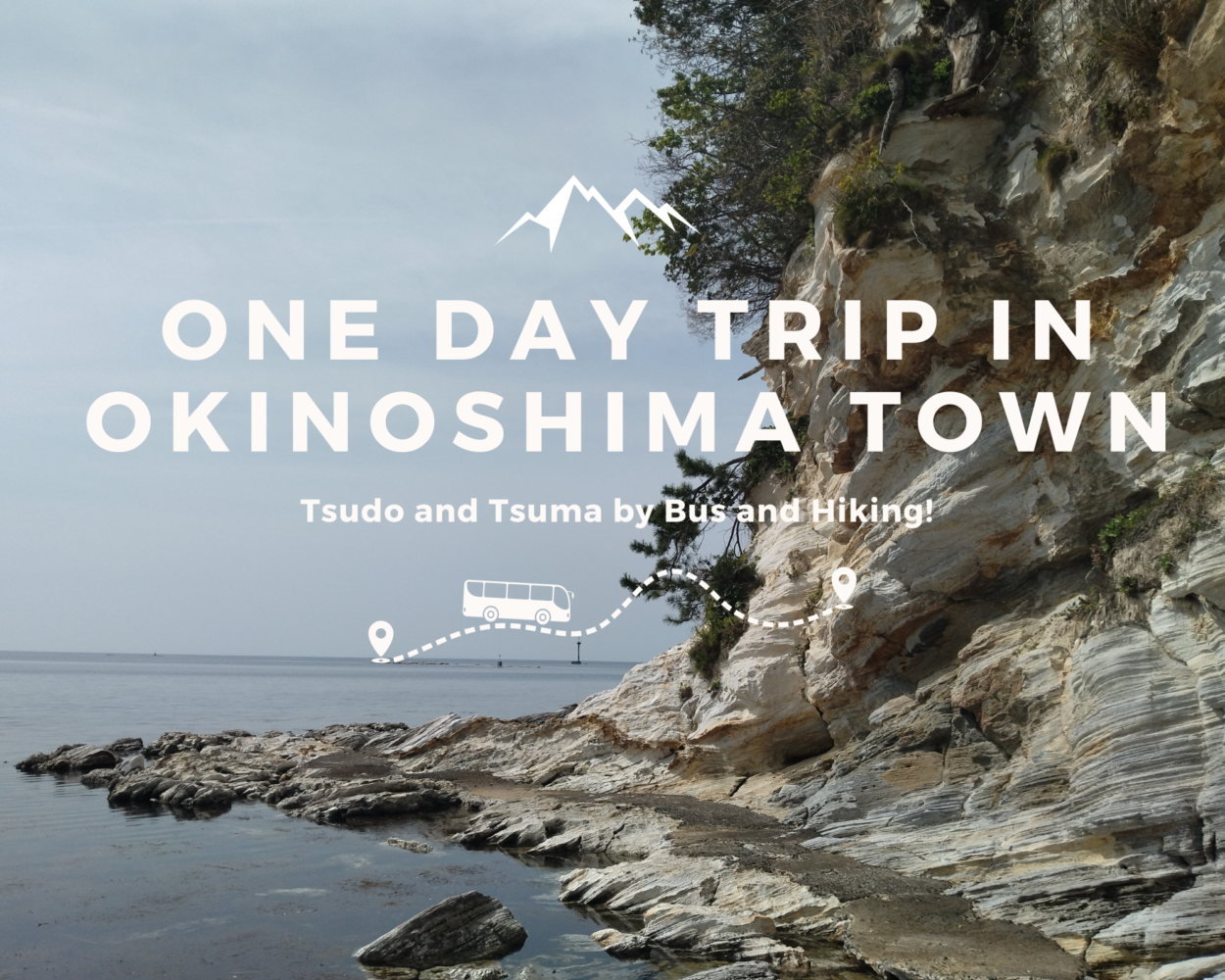8:52 AM Take a bus from Oki Hospital
In Okinoshima Town, all bus lines lead to Oki Hospital, making this stop a starting point for all sightseeing trips away from the outer Saigō Port area using public transportation. Grab yourself a drink from the vending machines and board the bus bound for Mukōyama (向山).
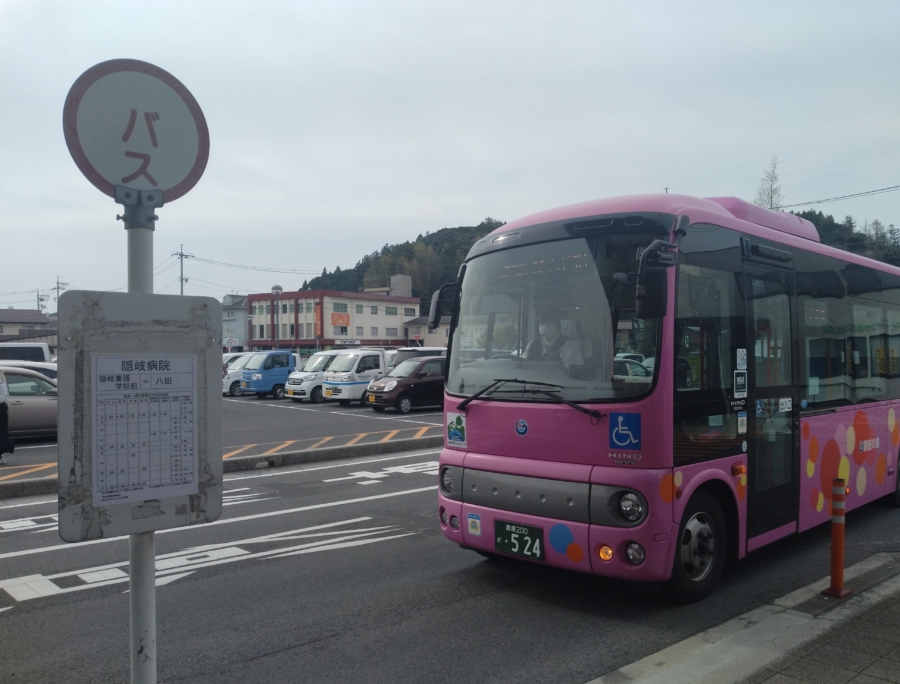
9:24 AM Arrive at Tsudo
Welcome to Tsudo! Hopping off the bus, take a moment to orient yourself. The small building right in front of you is the bus stop shelter with toilet facilities. The road straight ahead, along the car park, will take you to Hanaike Shrine. The road on your left leads to the head of Oku Tsudo Coast Walking Trail. If you forgot to grab a drink at the Oki Hospital bus stop, fear not—there are a couple of vending machines here and there, and they are easy to spot.
Ready? Let’s go to Hanaike Shrine! 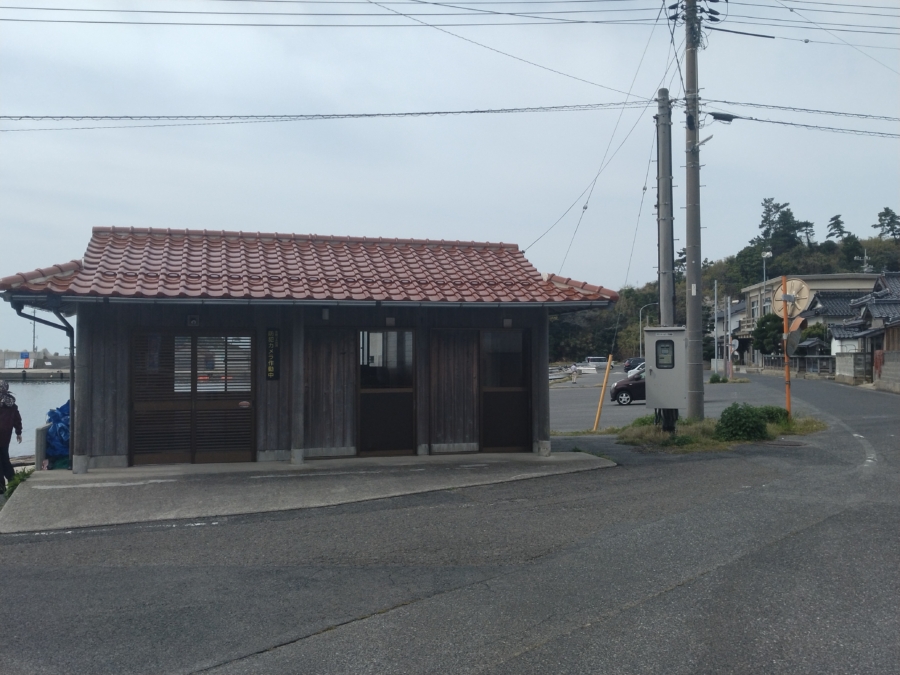
Walk to Hanaike Shrine
Straight ahead along the car park by Tsudo Port, then into a narrow street on your right, and here it is—Hanaike Shrine. Established in the 17th century, it has an interesting origin, tied to the Ichinomiya Asama Shrine in Yamanashi Prefecture—a part of the divine spirit worshipped there has been brought and enshrined here. The annual festival takes place on March 28 and features ritual arrow shooting. The sumo ring located on the shrine grounds hints at the special place this art holds in the local culture.
Climb the stairs to the shrine buildings to enjoy the peaceful Tsudo townscape and Shinto shrine ambiance. Don’t forget to snap a picture!
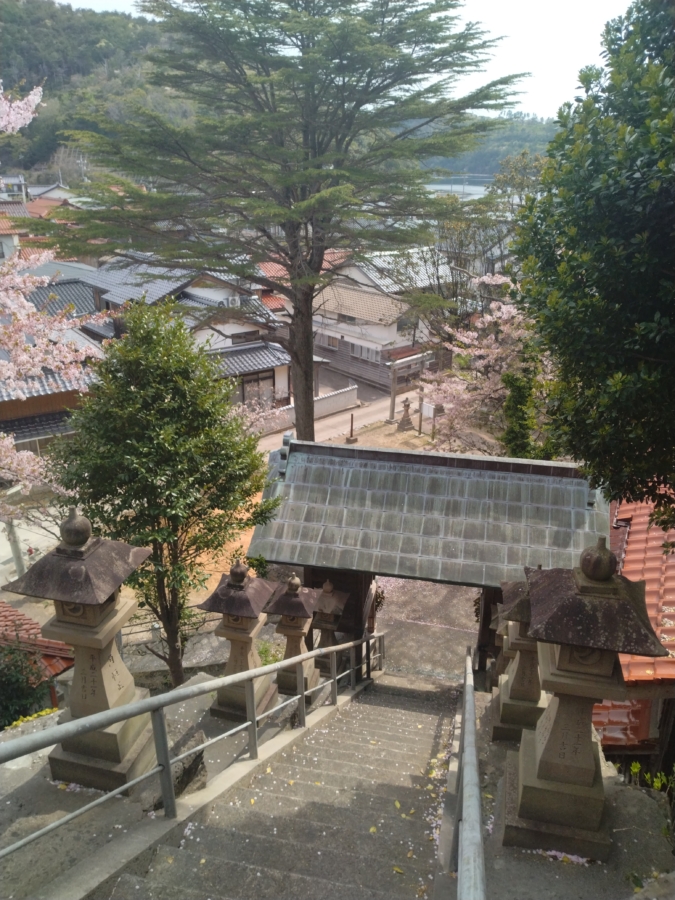
Backtrack to Tsudo Port
Taking in the sights of a fishing village, retrace your steps to the Tsudo bus stop shelter. This is your chance to use the toilet facility until lunch! Once you’re ready, turn for the Tsudo Coast Walking Trail. Please be advised that there is no signage for the trailhead on the site.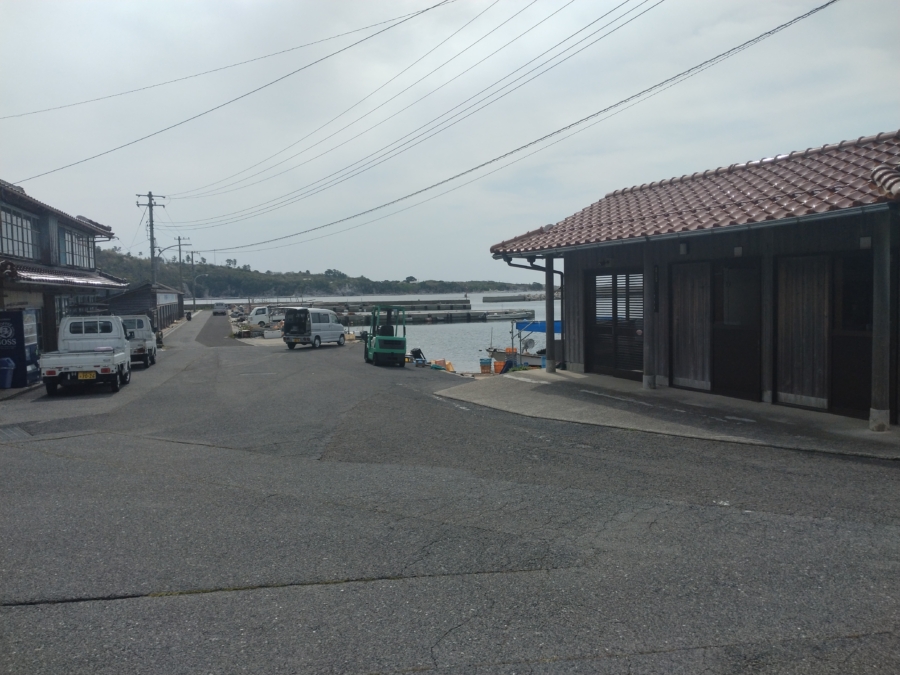
Enjoy the Oku Tsudo Coast Walking Trail
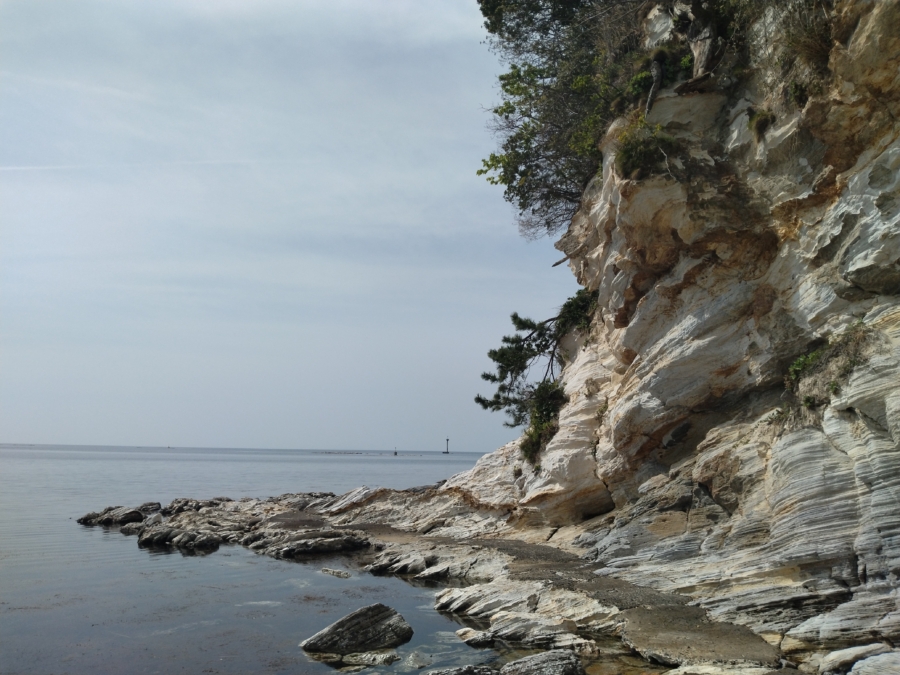
True to its name, the trail offers not so much of a hike but a pleasant stroll to the sound of waves washing on the Oku Tsudo Coast. Follow the path into the bay to encounter many natural wonders of the islands. Why are the cliffs white? What about the striped pattern? And if you are interested in botany—what is mono maple doing here at sea level? Did it forget its habitat is high up in the mountains? Conveniently located geopark signboards might shed some light on those questions.
Moving on past the cliffs, the trail continues along the sandy beach, then a sandbar. The last section goes through a small fishing port with a clear view of Island Park Hotel and Mount Takada towering in the distance. Once you reach the main road with the trailhead signage on your right, you have completed your Oku Tsudo Coast experience.
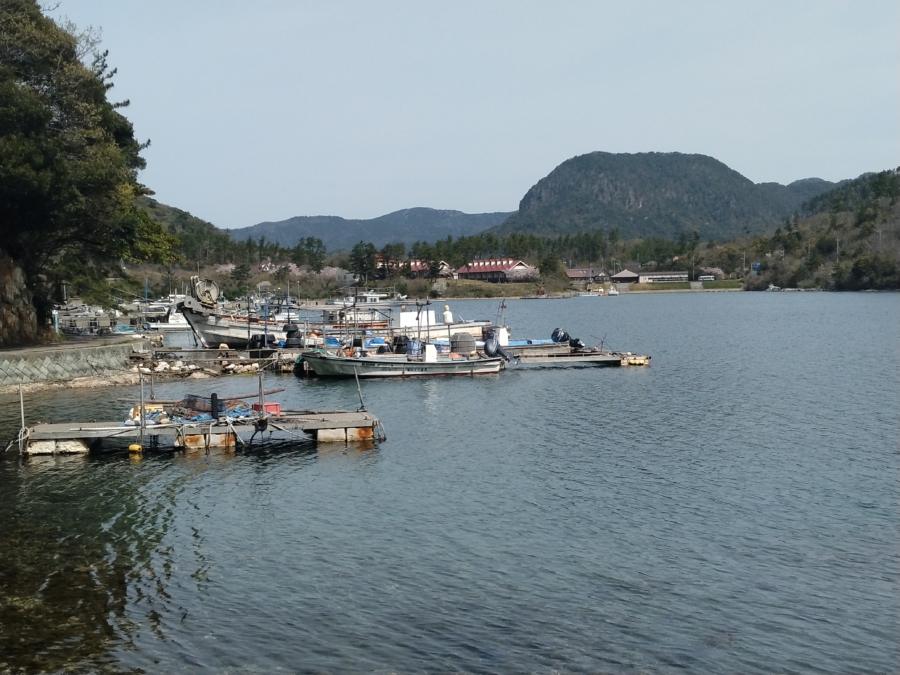
*Oku Tsudo Walking Trail is not completely paved and can be slippery when washed over by strong waves. During high tides, it may be inaccessible. Please check the weather forecast before setting off and exercise caution when visiting the trail.
Walk to Tsuma Hiking Trail
Do you want to know a secret?
Other than the walking trail you have just completed, the Tsudo area holds a forest hiking trail that leads in a loop to two lookouts. Locals know it well, yet it remains a bit of a hidden gem for tourists.
There is no time like the present to explore!
So, as you are standing at the side of the road with the trailhead signage, take a turn right and walk ahead to Restaurant Nagi. In the car park behind it, there is a vending machine (if you’re low on drinks, get a new one!), a big signboard, and a small crossroad.
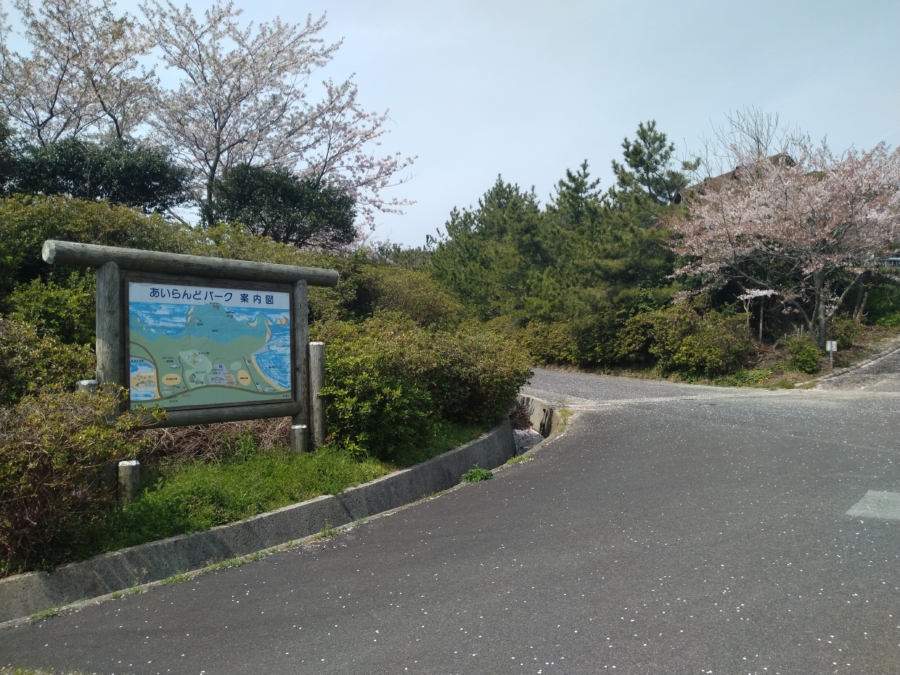
If you’re facing the signboard, then the road to your right leads to the log houses. You, however, are taking the road that goes straight ahead and following it to this clearing.
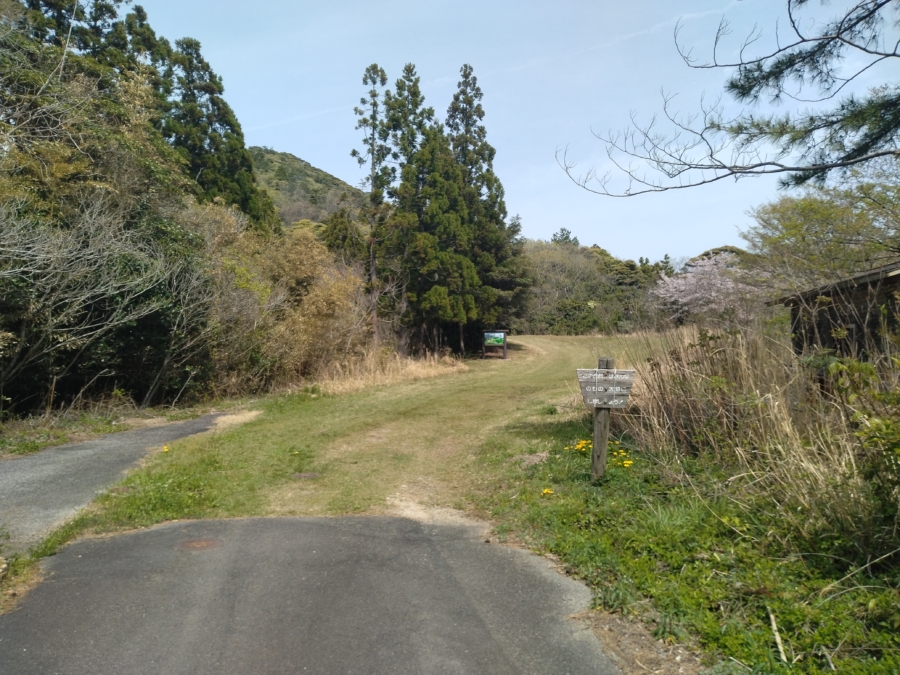
Walking a bit closer, you will notice not one but two big signboards depicting the route to the lookouts. The one closer to you marks the starting point of the Tsuma Hiking Trail.

Hike to Ōgibira and Suzaki Lookouts
Get ready for some cardio!
The trail alternates between stairs and dirt paths, and all in all, offers an easy hike, lacking challenging steep parts that might require the use of a rope. At one point it passes by a place where shiitake mushrooms are cultivated. Let’s not disturb them.
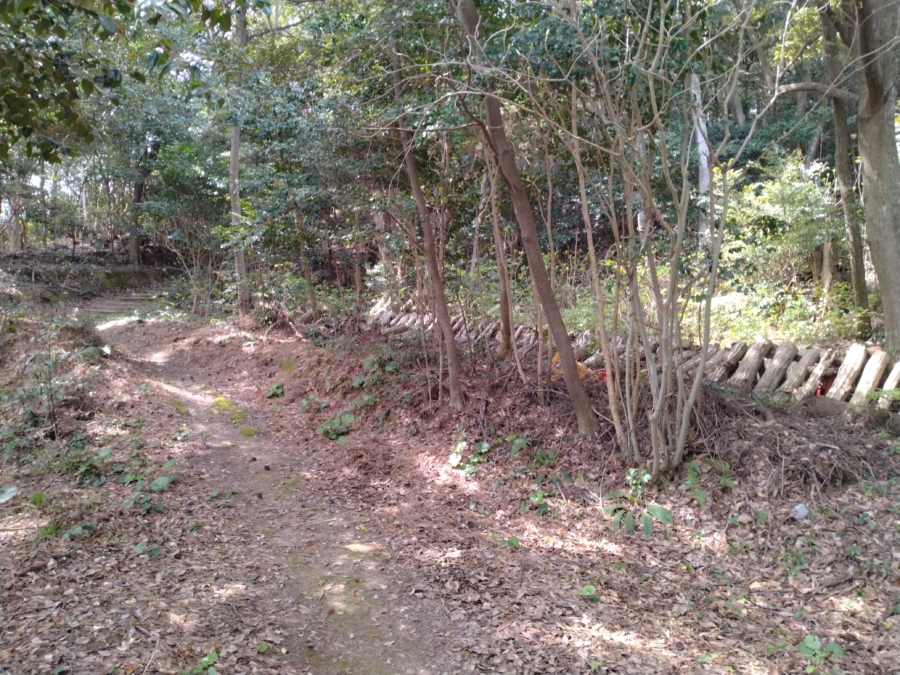
The first stop on the hike is a rest area—and frankly, it is already beautiful there, with a clear view of the Dōzen Islands and the coast of the Tsudo area peeking through from behind the trees. If you’re pressed for time, you might want to consider calling it a hike here and backtrack to the clearing.

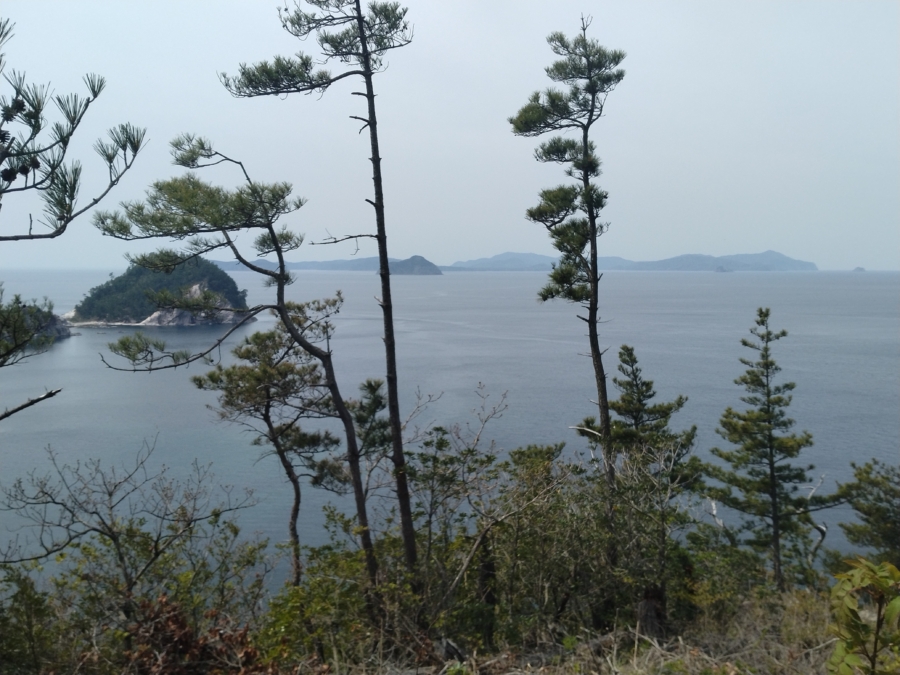
If not, continue to Ōgibira and Suzaki Lookouts because the views they command are nothing short of breathtaking. Suzaki Lookout especially reveals the greater Tsuma area to delighted eyes, with its rice fields and a row of boathouses watched over by Mount Takada.
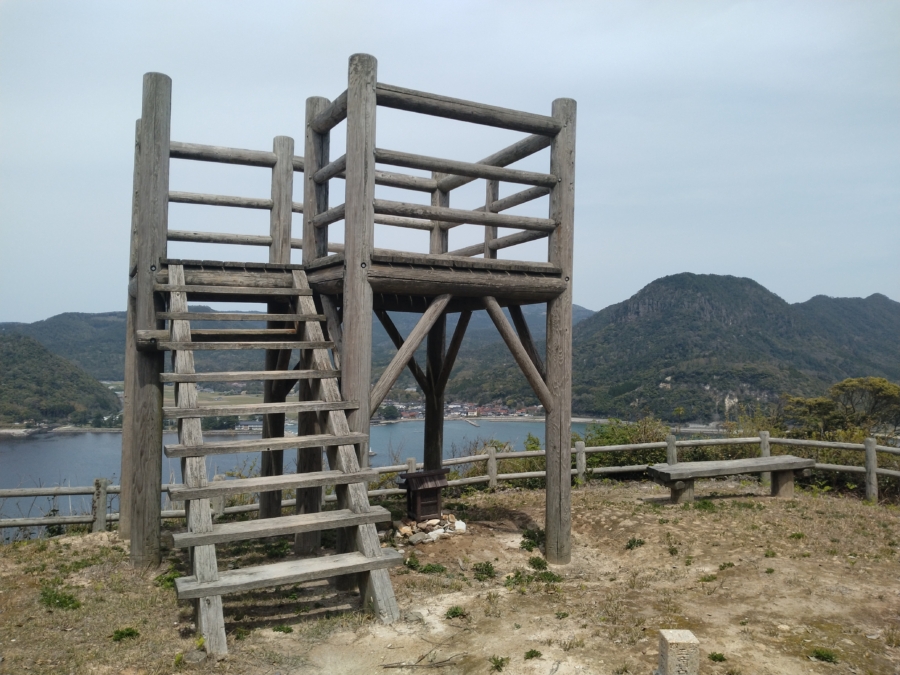
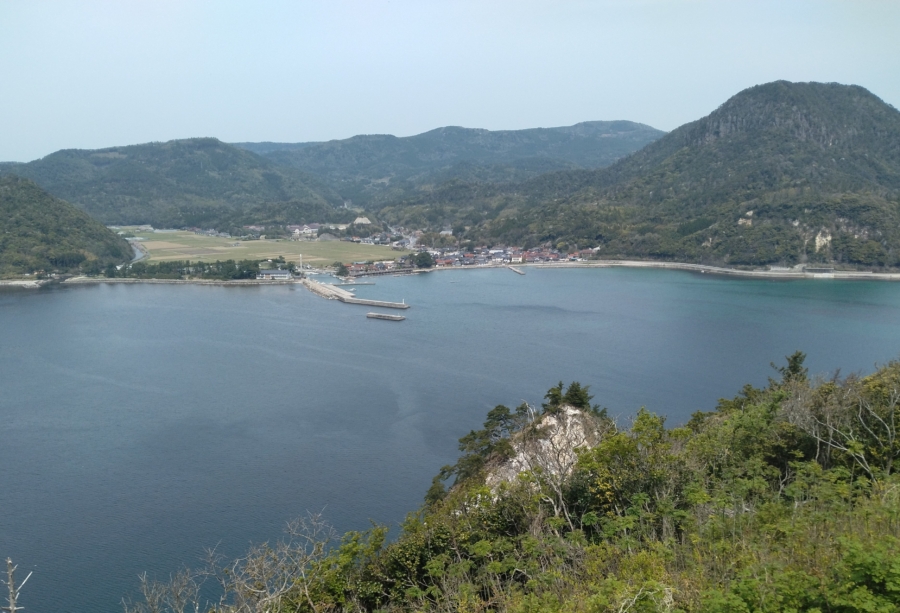
The last part of the trail is a bit bumpy, so please watch your step. But don’t forget to keep an eye on the goings-on in the forest around as well—with some luck; you might spot the endemic species of Oki hare in the wild!

*The trail takes approx. 1 hour to complete at a moderate pace. If you want to visit two lookouts, not only the rest area, start the hike no later than 11:10 AM.
12:10 PM Enjoy lunch at Restaurant Nagi
By the time the noon chime plays, you have no doubt worked up a good appetite. Backtrack to Restaurant Nagi for one of their lunch sets. In case you haven’t tried Oki beef yet, the roast beef rice bowl there is a delight. Just saying.
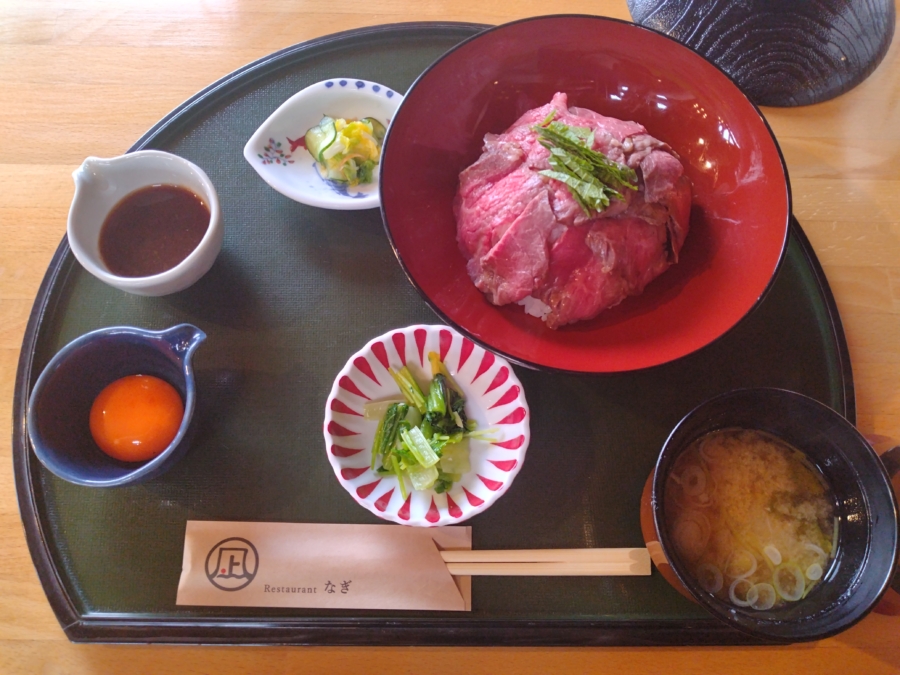
*Restaurant Nagi is closed on Wednesdays and Thursdays. If you plan to visit the Tsudo and Tsuma areas on either of these days, please bring a packed lunch with you.
1:04 PM Take a bus from Island Park Hotel
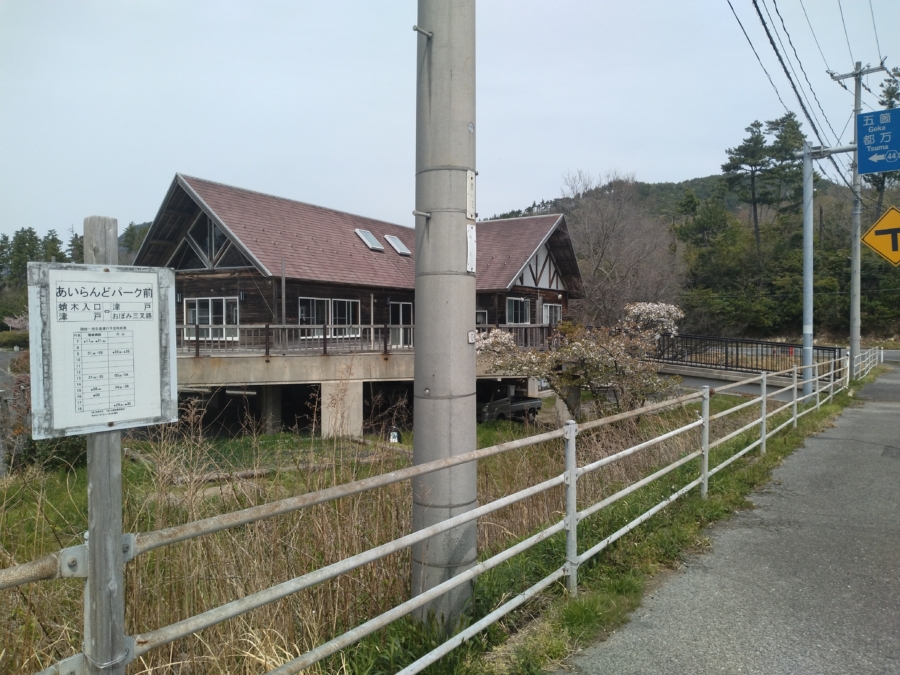
Restaurant Nagi has a terrace deck connected to the sidewalk by a small bridge. Once you cross it and turn right, you are practically almost at the bus stop already. Take a couple more steps closer to the white signboard with the bus timetable, to ensure the driver can see you waiting.
The bus bound for Mukōyama (向山) first stops on the opposite lane at 1:00 PM on its way to Tsudo. But don’t worry, it will come back a few minutes later to pick you up from where you are standing.
1:10 PM Arrive at Mukōyama
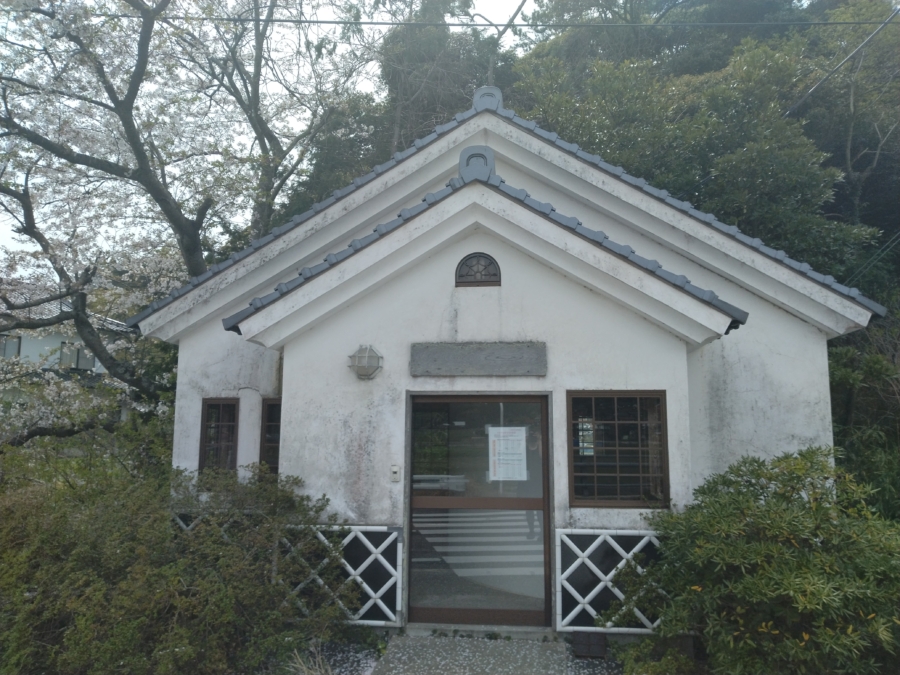
Mukōyama is the last stop on the Tsuma bus line. Once you arrive, let’s take a look around.
Counter-intuitive as it may seem, this small building in front of you is, in fact, Mukōyama bus stop shelter. Inside, there is a waiting room and toilet facility. Outside, to your right, flows the Tsuma River and there are some vending machines on its opposite bank. Behind you, on the other side of the road, rice fields are sprawling—the very same you have seen from Suzaki Lookout! And further away, to the left, the eagle eye might spot a torii gate. That is your next destination.
Walk to Amatatekanakaya Shrine
Cross the street from Mukōyama bus stop and turn left. Walk along the rice fields, soaking in the rural charm of Tsuma, then turn right at the first intersection. From there, it is scarcely a minute or two until you reach the torii gate.
Amatatekanakaya Shrine dates back to the 10th century and enjoys a reputation for being especially effective in granting wishes. According to local legends, a prayer here brought about a tempest that drew away enemy ships from the islands. Emperor Go-Daigo himself supposedly asked the deity of this shrine for his exile to end—and saw his dream come true.
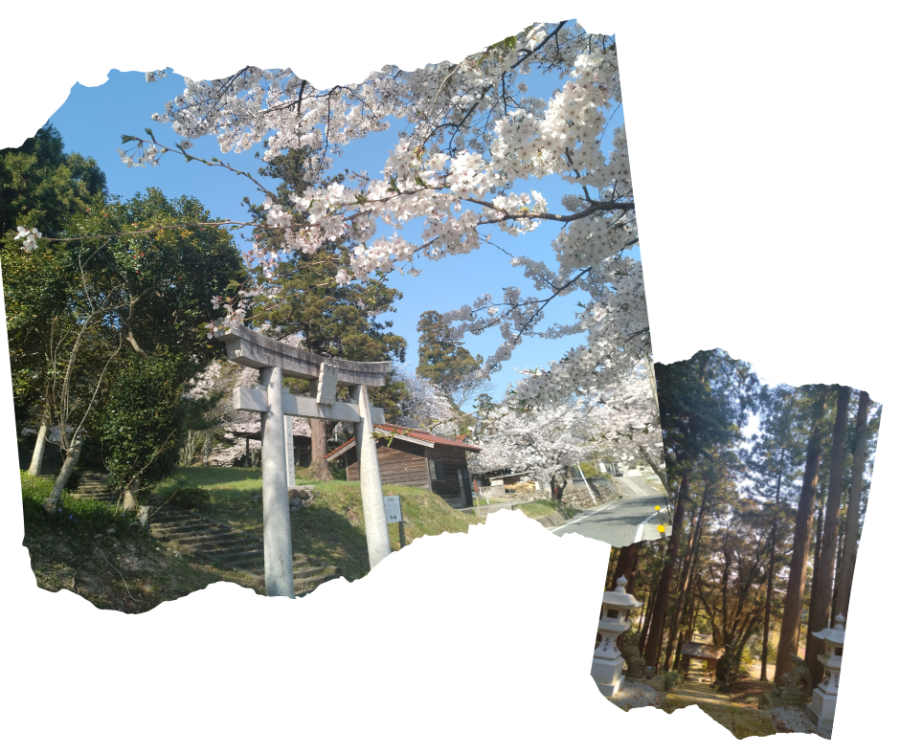
Don’t let the long stairs rob you of your breath! The visit to this shrine feels a bit like a forest bathing session, courtesy of tall Japanese cedar trees flanking the approach. Enjoy the fresh air and cool shade, connecting with the local history and culture. Oh, and is that a ushi-tsuki bull sumo rink tucked at the side below the shrine buildings?
Check out the Geopark site
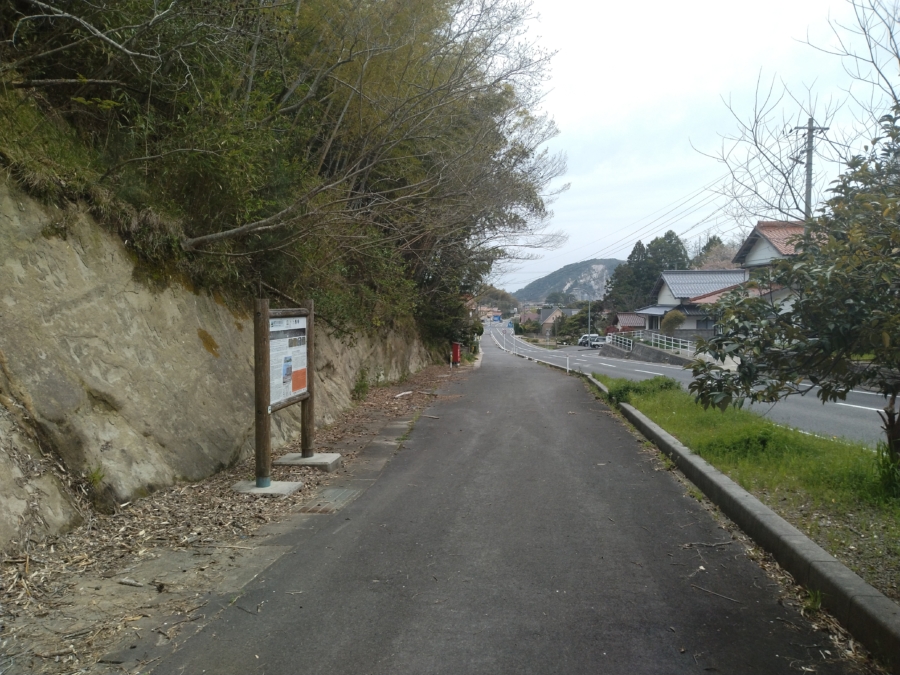
Backtrack to Mukōyama bus stop, but unless you want to use the toilet facility, do not cross the street for the bus shelter. Instead, march ahead on the same side of the road, until you pass an outcropped cliff that may seem quite ordinary—had the geopark signboard not been there to tell you otherwise.
Take a moment to marvel at the rich geological history of the islands, in true Oki fashion waiting literally on a sidewalk to be discovered.
Walk to Takada Shrine
Continue from the geopark site until you reach this intersection.
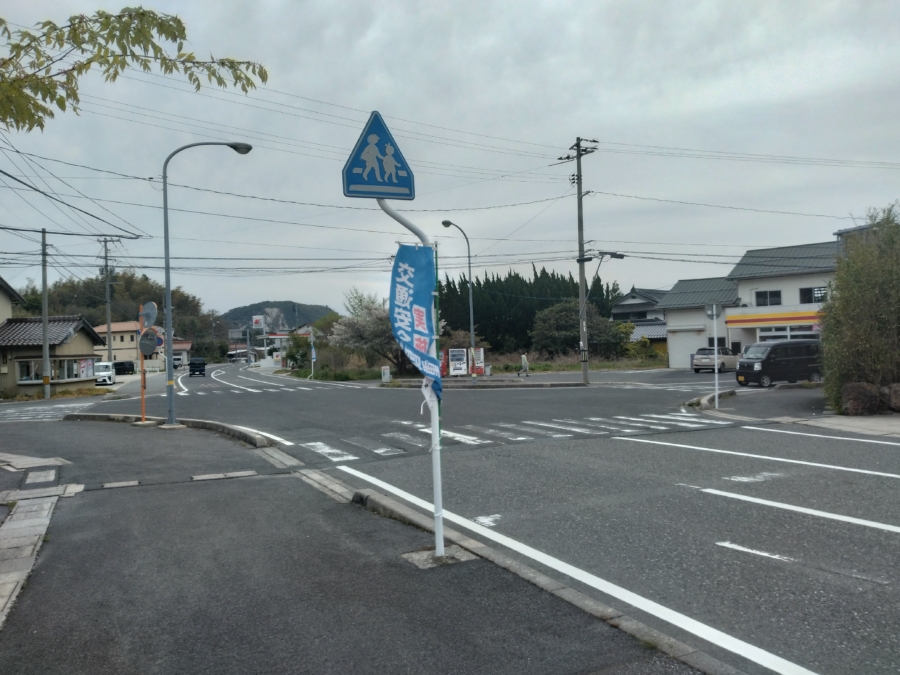
Take a left turn and walk down this road, along the Tsuma Culture Centre facility.
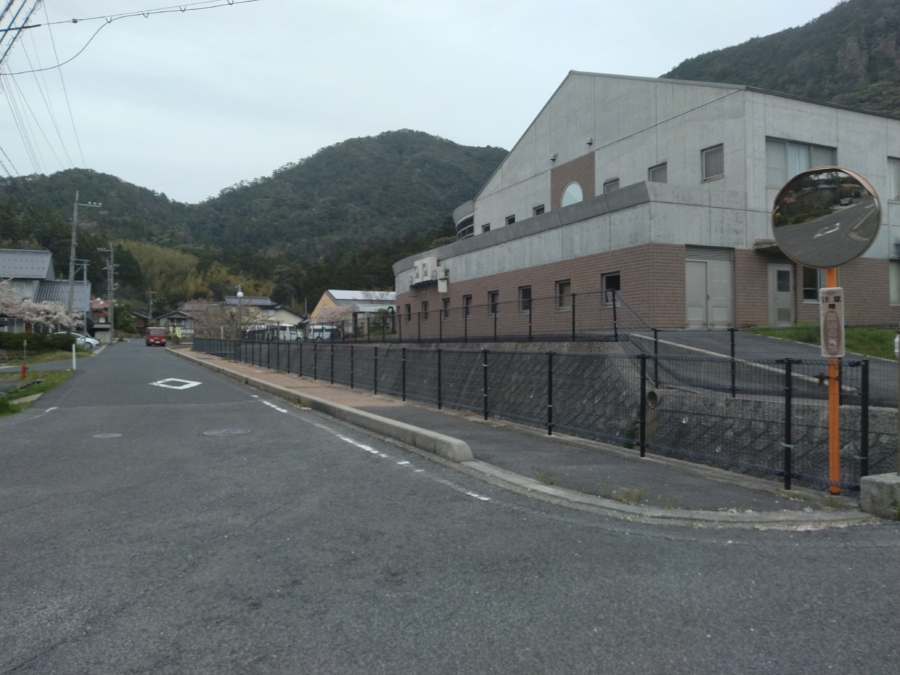
Carry on walking, even as the road narrows and leads you through a residential area.
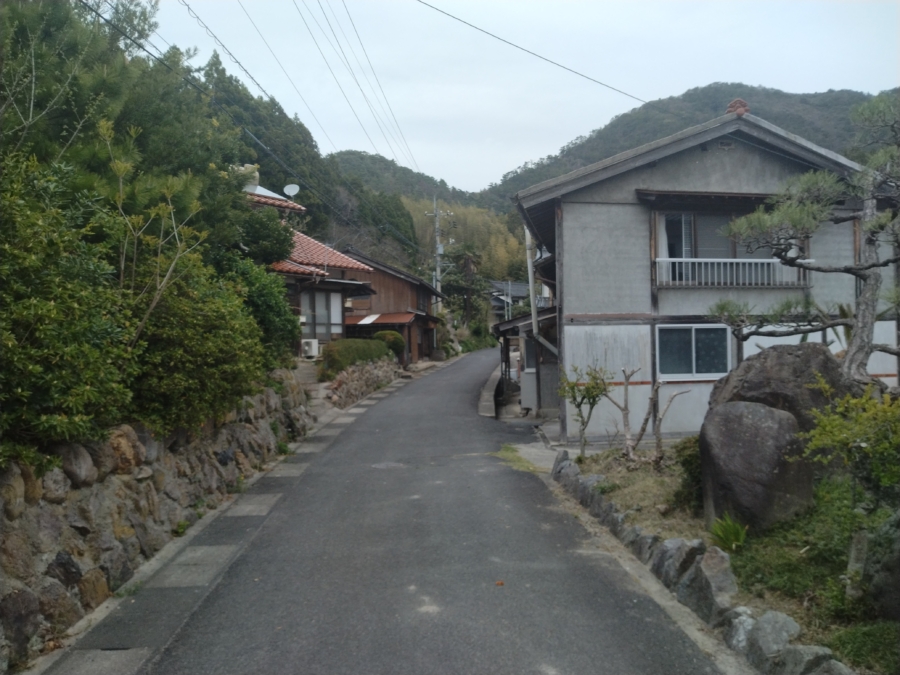
At the point where the street curls to the right, you might grow unsure if it’s the correct path. While referring to the attached map or checking the Google Maps app on your phone is always a recommended course of action, don’t worry—the torii gate awaits just around the corner, at the foot of Mount Takada.
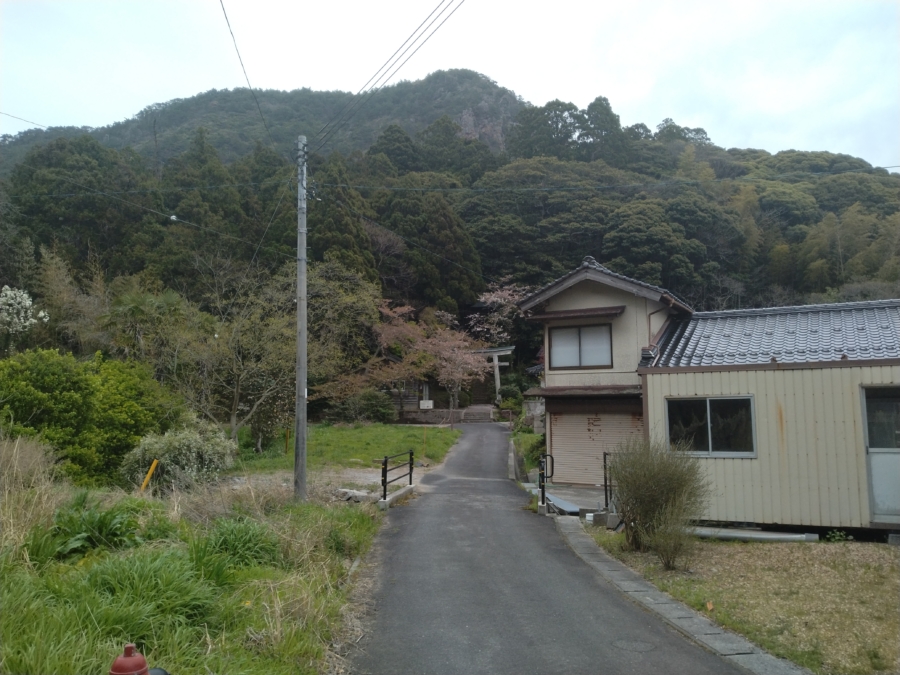
Takada Shrine is featured in many local legends. One of them tells the story of a virtuous monk who prayed here for an extended period and in his dreams saw the enshrined deity reciting a poem. The word of his miraculous vision quickly spread far beyond the islands, prompting nobles in Kyoto to send offerings in the form of a poetry anthology.
…And, as a matter of fact, back in the 14th century, nobles in Kyoto did send one such anthology as an offering to Takada Shrine. The calligraphed poems survived to this day and were designated as a tangible cultural property of Shimane Prefecture in 1966.
While the shrine itself is much older, the buildings we can currently see at its site date back to 1806. The main shrine building especially catches the eye with intricate carvings of dragons, decorating the roof structure. Some have been painted bright colours—a unique sight in Oki Islands.
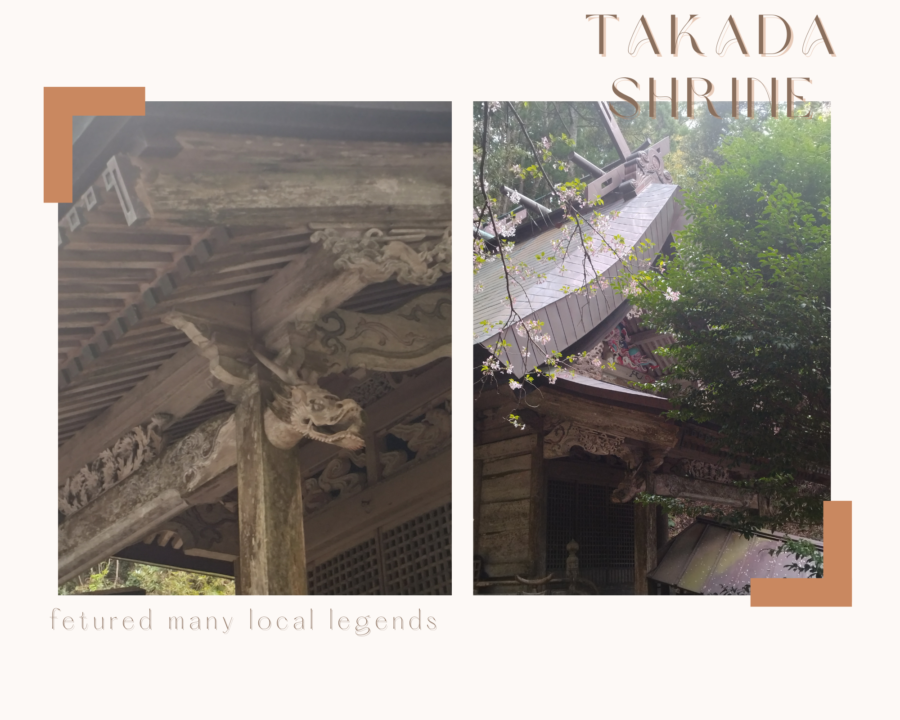
2:45 PM Spend time at Hatsumi Coffee
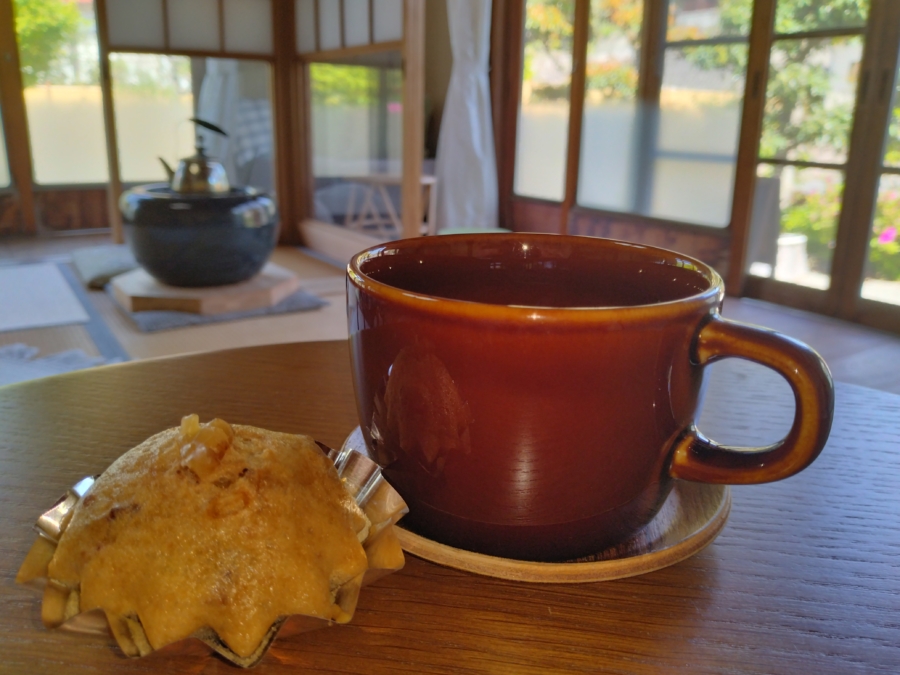
That was quite a lot of sightseeing you’ve done today! How about taking a break over a cup of tea or coffee?
Retrace your steps to Tsuma Culture Centre facilities, but instead of going back to the main road, turn left into yet another narrow, residential street.
In a minute or two, you will happen upon this building—Hatsumi Coffee.
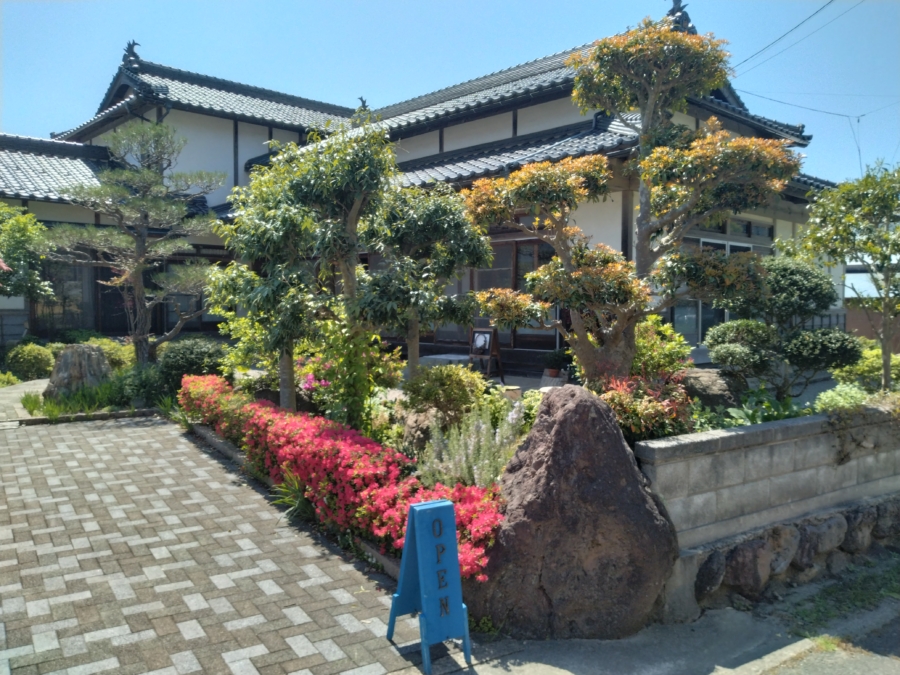
One part has been converted into a cosy neighbourhood café, beloved by the locals. You might want to call konnichiwa as you enter, since the staff may not hear you slide the door open.
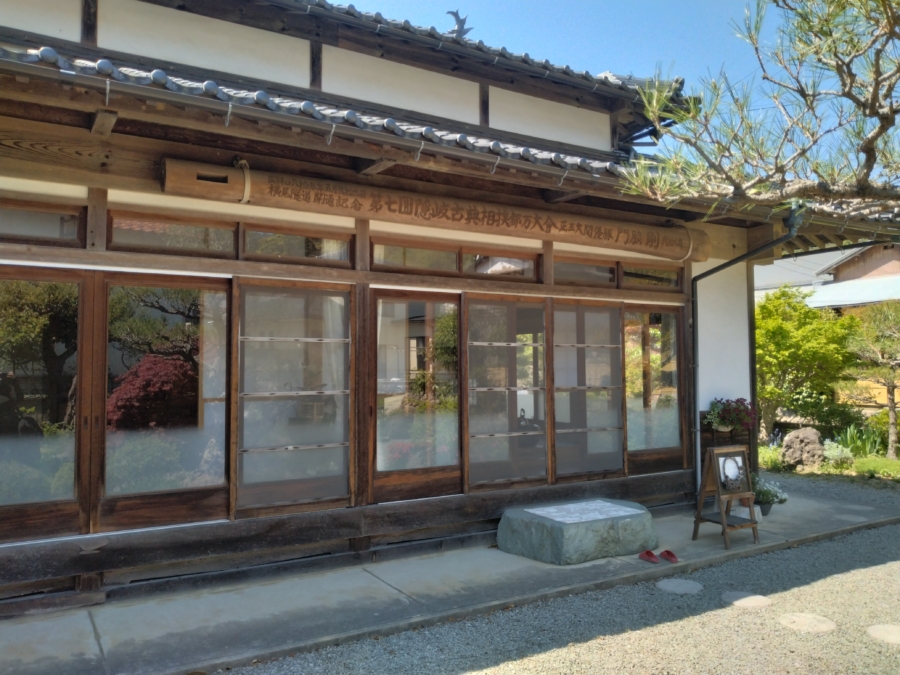
The café serves coffee, tea and a snack to go with either beverage—usually biscuits and steamed muffins (all of them homemade!). Take a seat in a beautiful Japanese-style room and enjoy peaceful moments.
*Closed on Wednesdays and Sundays.
3:40 PM Take a picture with the ushi-tsuki bull sumo statue and Funagoya boathouses
Back on the main road, turn left and march on towards the seaside. Soon enough you will see the Kamaya bus stop shelter (on the left) and the ushi-tsuki bull sumo statue (on the right).
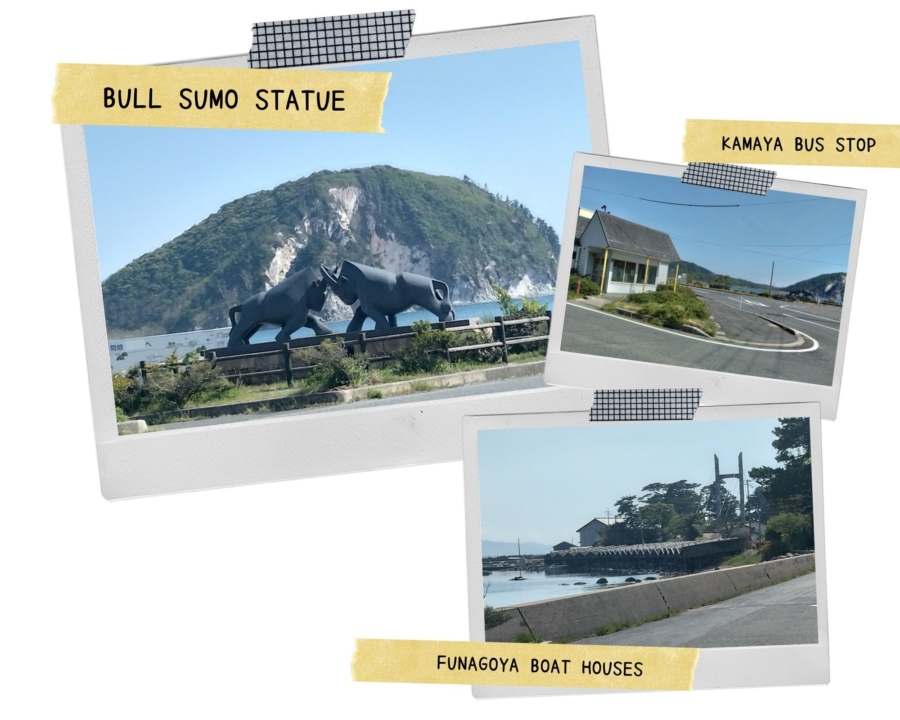
With a couple of minutes to spare, let’s take a better look at the statue and maybe snap a picture or two with Tsuma’s iconic row of boathouses in the background.
3:52 PM Take a bus from Kamaya back to Oki Hospital
Time to say goodbye to Tsuma Area!
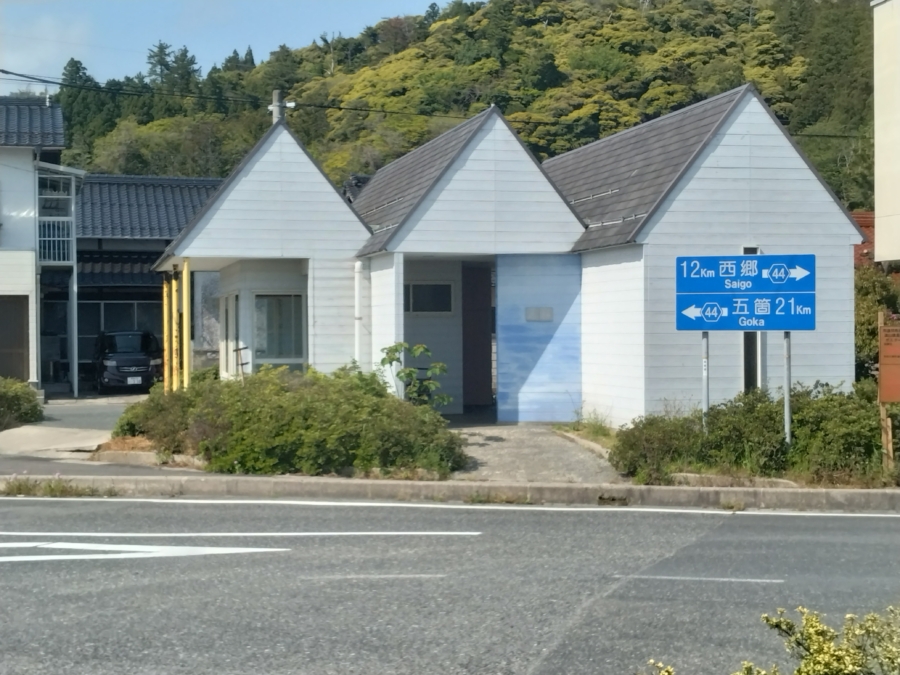
Cross the street from the ushi-tsuki bull sumo statue and board a bus bound for Oki Hospital (隠岐病院) at Kamaya bus stop. Once seated, look through the window for the last glimpses of Tsuma’s coastline.
End of your trip
I hope you had fun in the Tsudo and Tsuma areas! Now, please enjoy a delicious dinner and a good night’s sleep to get ready for another day of exploring the Oki Islands.
Author: Izabela Raczynska

